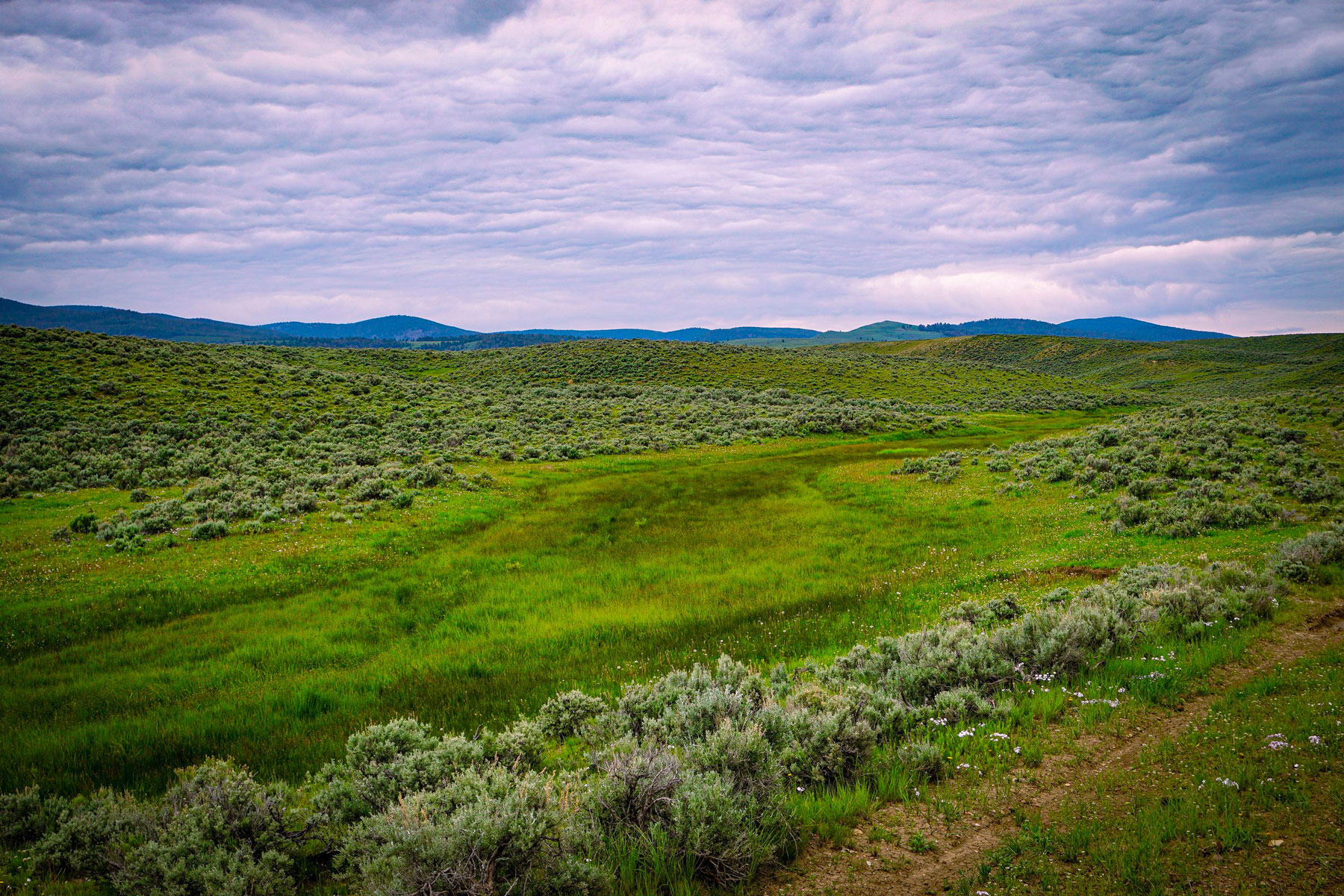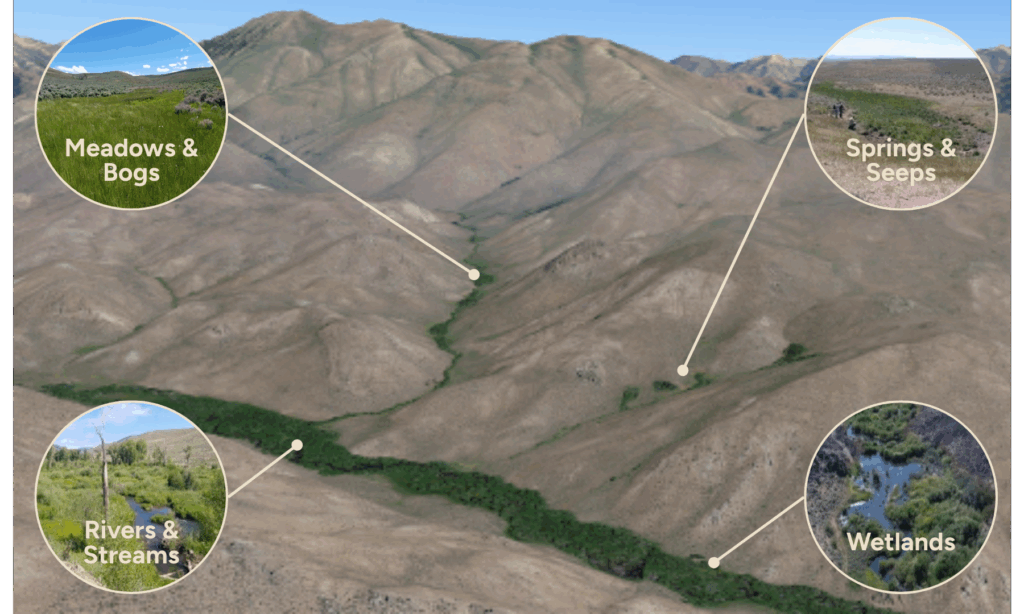
Wet Meadow and Riparian Restoration
Sustaining Water in Sagebrush Rangelands
Wet habitats in the West cover less than 2% of the landscape but are crucial for wildlife and livestock.
In the summer, sage grouse hens seek out these green ribbons in the sagebrush sea when the uplands dry out to raise and feed their chicks. These areas are also essential for the human communities in the West, supporting working ranchlands, hunting, fishing, and wildlife viewing. As drought becomes more frequent under a warming and drying climate, scarce water resources will become even more coveted by all users.
Riparian and wet meadow systems are referred to as green ribbons across the sagebrush sea. Our work primarily focuses on meadows, bogs, springs seeps, ephemeral and intermittent streams. Diagram created by Jeremy Maestas, Ecologist, USDA-NRCS West National Technology Support Center.


Despite their paramount importance, many springs, streamside riparian areas, and upland ephemeral wet meadows are degraded by headcutting, gully erosion, channel incision, vegetation loss, and other forms of degradation. These impacts disconnect wet areas from their floodplains, reducing natural resilience to drought and water storage capacity. Sustaining these scarce water resources is critical to proactively conserving the sagebrush ecosystem and working lands in the West, and will help to contribute to drought resilience as climate changes.
putting science into practice
While there is no shortage of degraded riparian areas and wet meadows that need restoration across the West, there is a shortage of time, experts, and funding to address these resource concerns. There is also increasing interest in addressing degradation in riparian and wet meadow systems with simple, low-cost restoration techniques, the use of which has rapidly expanded. To support our partners in this work and to build off previous successes in this area, we have developed a Riparian and Wet Meadow Restoration Strategy to guide our work in this area.
Here’s what we’re working on:
Expanding capacity to restore ephemeral wet meadows in key sagebrush landscapes.
We’re providing training opportunities, both virtual and in-person, on the use of Zeedyk structures and other low-tech process based restoration techniques. We are also working with partners to build a skilled workforce to carry out this work by strengthening the skill sets and knowledge of existing local conservationists, land managers, landowners and other partners as well as developing additional contractor support. Contact Mandi Hirsch, Sagebrush Conservation Coordinator, to learn more.
Maintaining a central hub for riparian and wet meadow restoration using Zeedyk practices.
Access our one-stop-shop for Zeedyk resources here.
Sharing evidence of ecological outcomes from low-tech riparian and wet meadow restoration.
This work will help partners connect to the science underlying riparian and wet meadow restoration outcomes.
Supporting strategic spatial prioritization.
We will work with partners to use spatial data to prioritize their riparian and wet meadow restoration work.
Advancing strategic communications to expand mesic conservation and restoration.
We’ll keep telling the stories of folks across the sagebrush sea working to restore wet habitats!

SUPPORTING SCIENCE & RESOURCES
Zeedyk Virtual Workshops
Simple, low-tech restoration methods developed for the drylands of the desert southwest by Bill Zeedyk provide effective tools for protecting and restoring meadow systems. These techniques are cost-effective and hand-built allowing more people to participate in restoration. Watch our Wyoming- and Utah-based virtual workshops with experts Shawn Conner and Jeremy Maestas to learn about reading the landscape to recognize meadow conservation opportunities and how to plan, implement, and monitor various low-tech “Zeedyk” structures.
Zeedyk Virtual Workshops
Utah 2023
Zeedyk Virtual Workshops
Wyoming 2021
Zeedyk One-Stop-Shop
Access Zeedyk factsheets, videos, training, research, planning guides, success stories, and data tools.
Handout: “Using sticks and stones to improve incised streams and meadows”
Check out our new handout on low-tech process-based restoration
Resilient Landscapes Resource List
The latest science and tools for conservation in the Intermountain West.
Partnership in Action
Simple Structures Can Help Streams Survive
An article from ScienceNews on the growing popularity of low-tech process-based restoration.
Hand-Built Structures for Restoring Degraded Meadows
Examples and lessons learned from the Upper Gunnison River Basin, Colorado
Conserving Diverse Wet Habitats Keeps Western Rangelands Resilient
New research outlines the effectiveness of low-tech process-based restoration.


